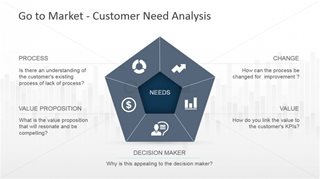 ≡
≡
Taking Total Control Of The Sales Call
Aug 31, 2023 by Sean Luce Out in the field last week, I noticed some moves by a couple of young sales reps that exemplified controlling a sales call from start to finish.
Out in the field last week, I noticed some moves by a couple of young sales reps that exemplified controlling a sales call from start to finish.
On average, once we get into the meat of the sales call, we have about 17 minutes to accomplish our intended purpose. In this case, I had two different sales calls. The first was a CMP, or needs analysis, call and the other was a closing call for an annual agreement. No set-ups on these calls for me either -- they were the real deal. I ride with the reps we consult. It's the only way to really see if the training, and most importantly, the in-field coaching by the sales manager is taking root. My purpose on the calls was observation as opposed to the reps meeting with me to ask for opinions or suggestions on their marketing.
1st call: CMP: This was done by a rookie 24-year-old sales rep with four months of media sales experience with her company. She had sent over the pre-call checklist on scouting the account for me to preview so I would have the knowledge of the account. We were calling on a real estate agent. As usual, things at a real estate company are pretty busy. The rep scheduled a 20-minute call for her needs gathering.
-- Establish control: The real estate agent came into the small conference room inside the brokerage and stated things were hectic and she needed to move quickly. She also said a client was waiting in the lobby for her. In most cases and even with veteran reps, they would short change this call. Not our new sales rep. She quickly says we will be 20 minutes as stated on her phone call to set up the appointment and proceeded to take out her CMP folder. She noted that the information stayed confidential and handed the CMP folder over to the real estate agent and asked her to check off the top three things that were most important to her from the 25 options. She did not deviate from her purpose on the sales call and quickly established that she was in control by having the real estate agent check off her wish list.
-- Power Domain: The real estate agent was in her power domain inside her company's office. Our sales rep took a seat right next to the real estate agent. Subtle nuances of body language count in a sales call. The young rookie leveled the playing field early by sitting next to the agent.
-- Quantify, qualify, and set the next appointment. The rookie rep asked how many listings the agent was currently doing, how many would be a reasonable increase, and put a dollar figure to it. The rep also found out on a 1-to-10 question where the shortcomings were on the media the agent was currently using. A 5 and a 6 on her current advertising made the agent think that there was a better option out there versus what she was currently using. The next appointment was set.
In 48 hours the creative was done. Creative that truly rises above the clutter.
2nd call: Closing Annual: This call was done by a 26-year-old with three months of selling her display advertising. She previously had two years of radio sales experience. The advertiser was a car dealership. On this call, the "technical buyer" showed up four minutes into the call. The "tech buyer" was the decision-maker's wife.
-- Never flinching: The "tech buyer" normally stalls the call. Remember, the "tech buyer" can't say yes, can only say no, and usually does. During the course of the call, the "tech buyer" wants to use the new product before her husband can make the decision. The "tech buyer" then says that on any creative, she needs to approve it before her husband can sign the agreement. This is a tough situation to overcome. The sales rep isolates the objections from the "tech buyer" and says they are noted and continues on with her presentation all the while noting the needs of the wife. In many cases, I see the sales rep cave on a call like this and let the "tech buyer" dominate. Not so here. The sales rep's eyes continued to focus on the decision-maker and his body language while casually looking at the wife and then back to the husband.
-- Time to close: Yes, the first one who talks does own it. On several occasions this call could have gone back to the drawing board. The sales rep stayed the course, asked for the annual, and got the signature. The objections all came from the wife. By the end of the call, the sales rep had plans to go have drinks with the wife. The wife asked that new creative be done before her husband could sign. The rep said she would redo the creative after the signature. This is the way to do it -- instead of having to keep going back and redoing creative, get the signature and then redo the creative. Otherwise, you could be on a nine-month wedding march and you never close it.
Sean Luce is the Head International Instructor for the Luce Performance Group International and can be reached at sean@luceperformancegroup.com or www.luceperformancegroup.com.
Related Categories




